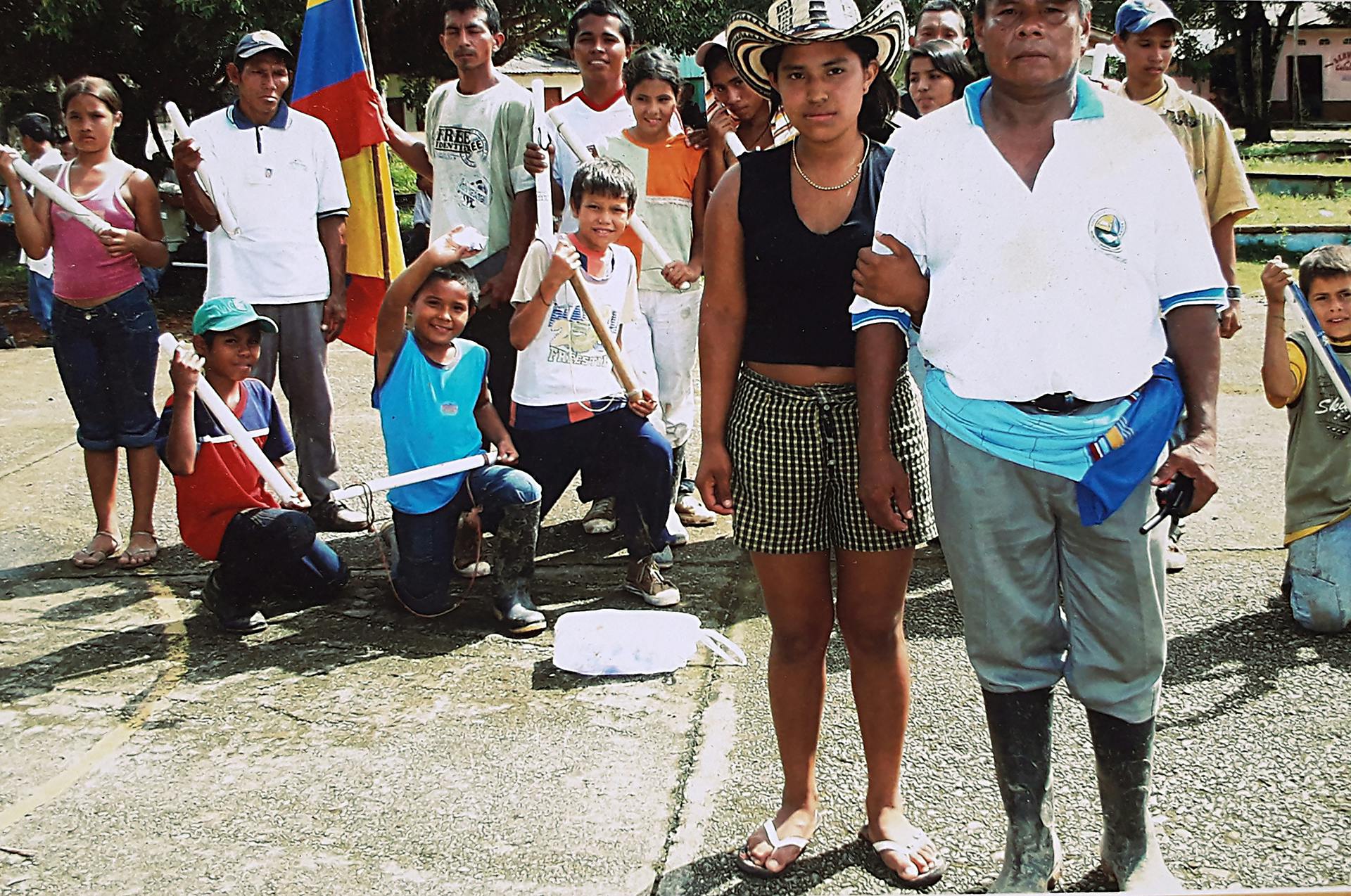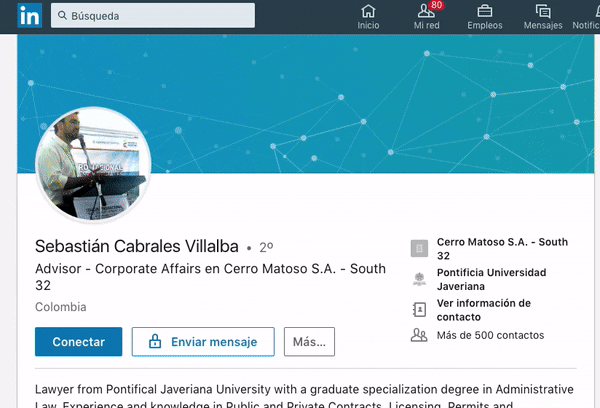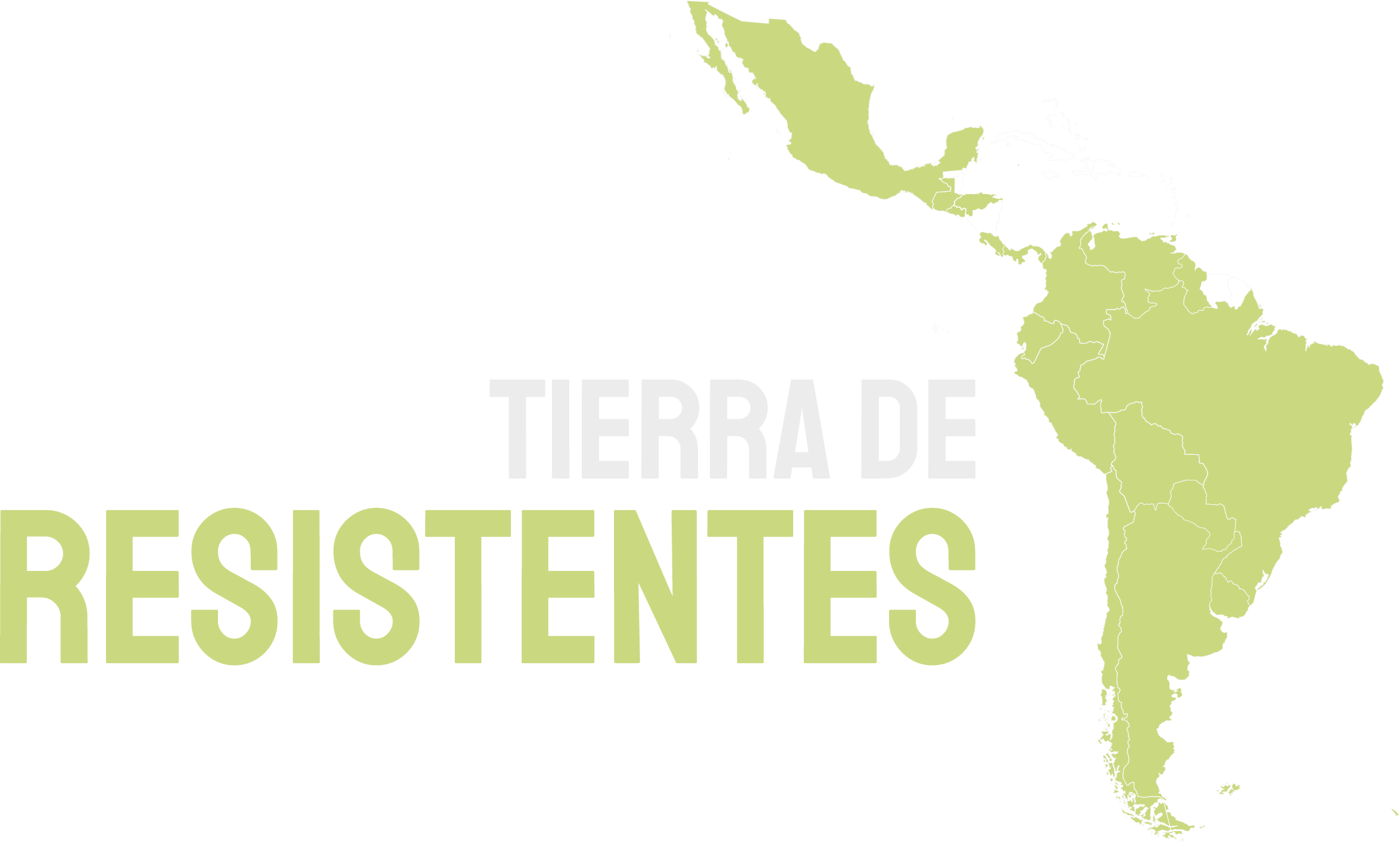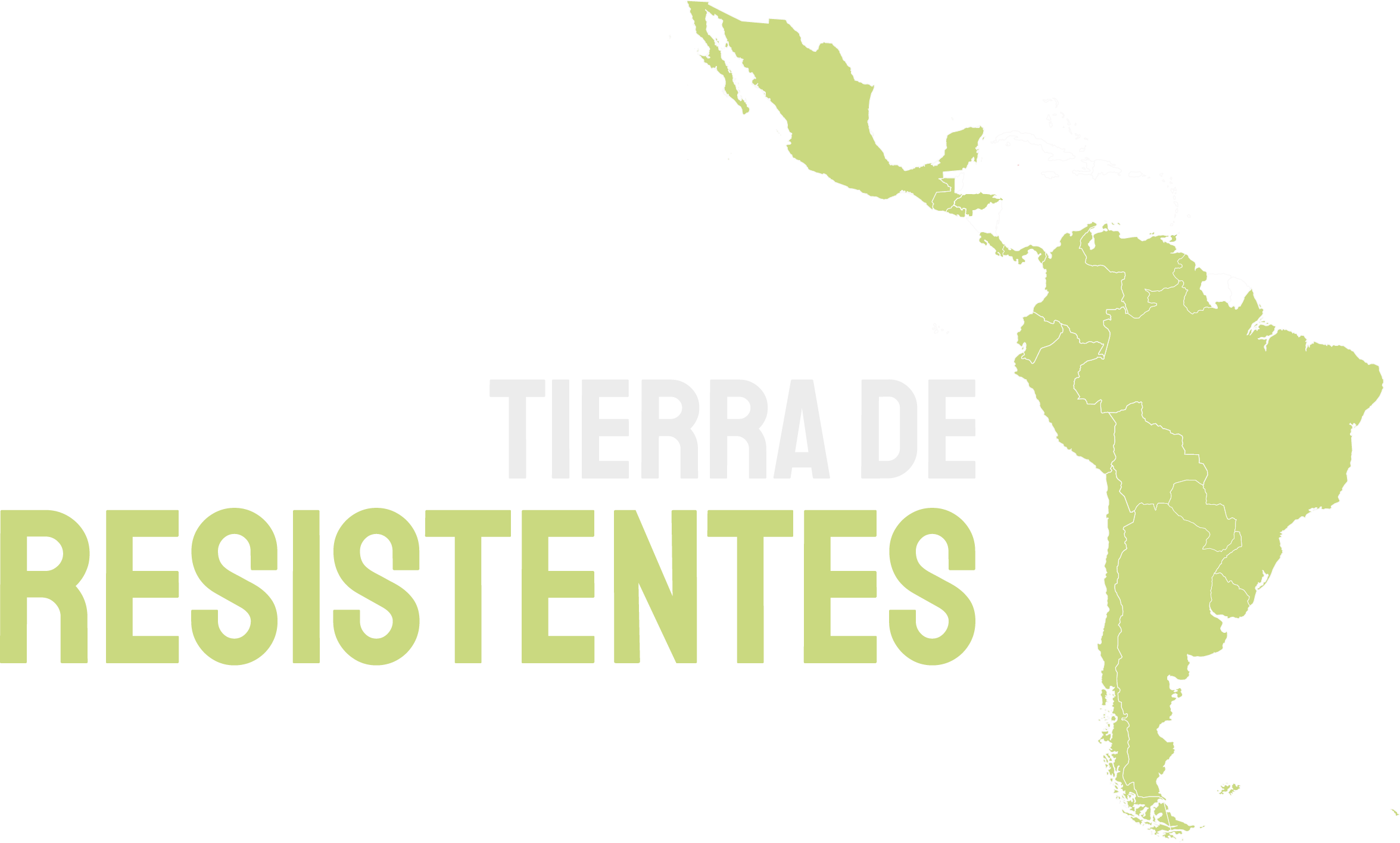The Zenú people of Córdoba survived the conquest and are now fighting against a neighboring nickel mine. Their voices and the indigenous oral tradition dubbed the ‘mountain cry’ encourage them to carry on and share what is happening to them. Irrael Aguilar, one of their leaders, tells their story of resistance.
On June 19, 2018, in two distant cities separated by 3,000 kilometers, two events occurred related to the legal battle waged by ethnic minorities against the Cerro Matoso S.A. nickel complex, located in the department of Córdoba, in northern Colombia.
In a school in the municipality of San José de Uré, in the Upper San Jorge region, a prior consultation was carried out, ordered by the Colombian Constitutional Court, following an intense legal struggle. That ruling sought to protect the fundamental rights to health and a healthy environment of the ethnic communities -both Zenú indigenous and Afro-descendant people- that inhabit the area of influence of Cerro Matoso’s mine.
On the same day, in an office in Houston, Texas, a lawyer rummaged through documents that could prove that the multinational BHP Billiton is still accountable for the business of its subsidiary, South32, to which it transferred its Colombian nickel business in 2015.
Although ethnic minorities managed to get the Colombian justice system to rule in their favor, the Court’s decision does not cover damages that occurred during the past 37 years. This is why they came up with a Plan B: holding BHP Billiton and South32 accountable for the impact that Cerro Matoso S.A. has had on their territory after decades of operation.
An unforgettable discovery
Two years before the Caribbean department of Córdoba was born in 1952, luck began to smile on this Colombian region with the discovery of ferronickel reserves. In 1963, a company with public-private capital was set up to explore the resource.
Public attention then turned towards the mineral and management of the million-dollar royalties it left the State. The mine also caught the attention of local politicians, especially Senator Salomón Náder (now deceased), as reported by Plinio Apuleyo Mendoza in his op-ed column “Dangerous friendships”, published in 1993 in El Tiempo
Surprisingly, on March 4, 1993, former Colombian Health Minister Amaury García Burgos, who had twice been Governor of Córdoba, was assassinated when he left a Cerro Matoso S.A. board meeting in the municipality of Montelíbano. He was an alternate board member of behalf of the National Government.
“What has happened with the 48 million dollars that Córdoba has received in royalties? Someone was interested in finding this out. He decided to investigate it“
Journalist Plinio Apuleyo Mendoza
Journalist Toño Sánchez Jr. recounts how the hitmen planned García Burgos’s crime in his book, Chronicles that they did not let me tell. “They never convicted the masterminds for the crime,” says his daughter, current Conservative Party Senator Nora García Burgos.
Twenty days after García Burgos’s death, journalist Plinio Apuleyo Mendoza asked several difficult questions in his weekly column: “What has happened with the 48 million dollars that Córdoba has received in royalties? Someone was interested in finding this out. He decided to investigate it. It was Mr. Amaury García Burgos. He was then assassinated, and his family and friends do not doubt that this was a consequence of the investigation undertaken by him.”
The mine and its contract
Cerro Matoso is a mining company belonging to the multinational South32, dedicated to the exploitation and transformation of ferronickel with energy.
Nickel, combined with iron, is used to produce stainless steel and is useful in the aviation, medical equipment and electronics industries, among others. Cerro Matoso S.A. currently exports it to 18 countries around the world.
The National Mining Agency (ANM) confirms that, according to point five of Amendment No. 4 of Contract 051-96M signed between Cerro Matoso S.A. and the government, the operation of the mine will be in effect for a term of 30 years, counted from 1999 to 2029. Additionally, also under Amendment Number 4, it could be extended for 15 more years, until August 2044, provided that processing capacity increases from 3 million dry tons per year to 4.5 million.
This is a point that has been questioned by local communities, who argue that the amendment modified the contracts governing the mining operation. In their view, the environmental license should also be re-processed because the environmental impact will be different and additional to that that has already been reported and which nobody examined.
See the Pen RutaNiquel para Tierra de Resistentes by Sara Castillejo (@Sarcas) on CodePen.
37 years of drowned screams
It has taken the Zenú and Afro-descendant communities four decades to make themselves heard. Ramón Carvajal Ávila, founder of the town of Unión Matoso, better known as Pueblo Flecha, in the municipality of Montelíbano, saw wildlife disappear and witnessed the drying up of water holes, associated -according to him- with the beginning of the exploitation of the nickel of the Cerro Matoso S.A. mine.
“This was a jungle. There were five water holes: Aguazul, Zaíno Macho, Pueblo Río, La Bertel, and Junco. There were collared peccaries, lowland pacas, deer and capybaras. Right now, there are occasionally capybaras… These ravines were rich in fish: gilthead bream, tilefish, tiger fish, bream, and there was even one kind of turtle. We lived off hunting and agriculture. Right now what you see is ‘dryness’, the forests are depleted. The company cleared all of the trees,” says Ramón Carvajal.
“Right now what you see is ‘dryness’, the forests are depleted. The company cleared all of the trees”
Ramón Carvajal
The man founded the town when he was 26 years old, after the displacement caused by the Uré creek avalanche in the town of Versalles. With other Zenú Indians, they built their houses on a hill, on a hectare donated by landowner José Arboleda.
Unión Matoso or Pueblo Flecha is in the backyard of Cerro Matoso, 902 meters from the mine, as stated in the Constitutional Court’s T-733 ruling. Dust with chemical residues scattered by the wind through the creeks, blowing as far as the houses of the peasants, is causing them illnesses, says Carvajal Ávila. Surprisingly, the company reported a different distance -3,719 meters- to the Constitutional Court.
The cries of the communities of the region were not heard beyond the Upper San Jorge. The voices of the workers of the mine, who reported health complications, which, according to them, were never certified by the professional risks insurance company, did not transcend either.
Just as we published, almost seven years since filing their action, judge Gladys Arteaga Díaz refused the former workers’ requests in a first instance ruling. However on page 55 of her decision, she stated that “this courtroom considers there are enough signs to consider that there is a causal relation between the sufferings of many Cerro Matoso S.A. employees and the risk levels they are exposed to at work” Lawyers and former workers are crossing their fingers for a favorable ruling in a second instance and eventually a revision by the country’s Constitutional Court.
“this courtroom considers there are enough signs to consider that there is a causal relation between the sufferings of many Cerro Matoso S.A. employees and the risk levels they are exposed to at work.”
Judge Gladys Arteaga Díaz
The indigenous groups did not stay still either. They began to move around and to demand a prior consultation from the National Government, as mandated by Convention 169, about Indigenous Peoples, of the United Nations’ International Labor Organization, which Colombia signed and later integrated into the normative framework of the 1991 Constitution.
The prior consultation is the formal consent of ethnic communities to projects that will be developed in the territories where they are settled or through which they transit.
According to their lawyer, Javier de la Hoz, the State’s responses to the ethnic communities were two and recurrent. “One, that the prior consultation did not apply, precisely because the nickel business was already in operation; and two, that they should be constituted as a reservation before the Ministry of the Interior and only after that date of political and legal recognition would they be valid interlocutors before Cerro Matoso S.A.”, explains the partner of De la Espriella Lawyers Enterprise.
That struggle for the creation of the reservation has meant pain and tears for Irrael and his community. Between 2004 and 2015, 48 members were assassinated. Ten of them were directly linked to the struggle for the political recognition and protection of the territory, which is why they played a crucial role in local leadership, according to the complaints recorded in documents kept by the Center for Research and Popular Education (Cinep)., a Jesuit-led human rights organization affiliated to the Catholic Church.
The indigenous reservation of Upper San Jorge, comprising 5 cabildos, has a population of 1,301 people. However, more than 2,000 people live in Cerro Matoso’s area of influence, including the members of the Community Council of the Black Communities of San José de Uré, according to the Constitutional Court’s ruling.
The reservation occupies 960 hectares of the municipalities of Montelíbano, Puerto Libertador, San José de Uré and La Apartada, in the geographical region known as the Upper San Jorge, for the river that crosses it. Criminal gangs move in the area, the result of residual groups of drug traffickers and paramilitaries who have inhabited the region since the 1970s. “A systematic process of threats, persecution and the assassination of indigenous leaders has emerged,” says Irrael.

On October 6, 2009, the chief constable of the reservation, Emiro Manuel de la Rosa Polo, was murdered in the 26 de Julio neighborhood of Montelíbano. The crime occurred in the presence of his wife and two children. He had a great convening authority among the cabildos and an enormous knowledge of the struggle for the creation of the reservation.
Silence ended up being imposed on a large part of the territory due to the absence of justice. A freedom of information request was sent to the national Attorney General’s Office for this story, inquiring about the state of the investigations of 45 murders between 2009 and 2018.
Their answer shows that 20 cases are inactive or were archived; 1 case is inactive but has a conviction; 2 cases are in inquiry; 8 cases are in investigation;3 more require further decisions from the Attorney General’s Office, given that the possible perpetrators have not been identified or individualized; and 11 murders do not appear with information in the system.
They begin to be heard
The legal actions against Cerro Matoso S.A. are long-standing and began in the ordinary courts of Monteria, with two guardianship actions (acción de tutela in Spanish) that led to decisions of the High Court of that department on July 15, 2013. These decisions were reviewed by the national Constitutional Court four years later.
On December 15, 2017, the Court issued Sentence T-733, in which it protects the fundamental rights to prior consultation, health and the enjoyment of a healthy environment of the ethnic communities of Bocas de Uré, Central America, Guacarí-La Odyssey, Pueblo Flecha, Puente de Uré, Puerto Colombia, Torno Rojo and the Afro-Colombian Community Council of San José de Uré.
In essence, the Court ordered the establishment of prevention, mitigation and environmental compensation measures regarding the damages that might have been caused by the continuation of the extractive work of the company Cerro Matoso S.A.
In practice, they had begun addressing the claims of Irrael Manuel Aguilar Solano, who at this time was the chief of the Zenú indigenous reservation of Upper San Jorge, and Luis Hernán Jacobo Otero, president of the Community Council of the Black Communities of Uré. Irrael is currently the leader and traditional spokesperson who attends the consultation on behalf of the reservation.
Among the specific protection strategies, it ordered measures with the aim of decontaminating the ecosystem (air, soil and bodies of water); adoption of technical methods that prevent the removal and dispersion of particulate material; restoration of the Caño Zaino creek; the restoration of the productive capacity of the affected lands; landscape recovery; and the isolation of the mining complex through artificial and/or natural barriers.
The judgment gathered reports from the Comptroller General’s Office that warned that Cerro Matoso S.A. lacked an environmental license that comprehensively covered the exploitation activities that were developed and projected. It also warned that the environmental license granted in 1981 to the company did not delineate exploitation areas nor did it foresee mitigation measures and environmental compensation. And it also contended that it did not establish a limit for the amount of material exploited, nor control and monitoring formulas. In summary, the Comptroller General indicated that the environmental license granted at the time by the Autonomous and Regional Corporation of the Valleys of Sinú and San Jorge (CVS) -the regional environmental authority- should not be considered valid beginning October 1, 2012, since conditions had changed substantially.
Upon consulting the government about the environmental license, the National Mining Agency (ANM) responded: “It is not true that the mining project developed by Cerro Matoso does not have a valid environmental instrument that covers the development of said project“.
María Claudia García, Viceminister of Environmental Policies at the Ministry of Environment, said that “the Constitutional Court did not suspend the activities of the company, indicating that it can continue to operate under the environmental license it holds, but once the process ordered by the Court is carried out, the company must obtain a new environmental license in order to continue this operation”. This was also confirmed by the Environmental Licensing Environmental Authority (ANLA).
And the health problems?
Sentence T-733 of the Constitutional Court reviewed two aspects. On the one hand, the reports from the National Institute of Legal Medicine and Forensic Sciences that confirmed the presence of nickel contamination in the air and in bodies of water, above the permitted levels; as well as the Comptroller General’s description of the recurrent presence of uncontrolled emissions and slag clouds that reached the surrounding villages.
For the study, Legal Medicine performed medical, toxicological and radiological examinations on the members of the ethnic communities that inhabit the municipalities of San José de Uré and Puerto Libertador, and found dermatological impacts in Pueblo Flecha.
“Nobody was interested in what happened to us and that’s why we keep fighting”
The Zenú spokesman, Irrael Aguilar
In spite of all the above, the studies of health effects were not systematic enough to establish a cause-effect relationship between the exploitation of nickel and the environmental problems reported since many years ago repeatedly by communities and workers.
The Zenú spokesman, Irrael Aguilar, is clear: “Nobody was interested in what happened to us and that’s why we keep fighting”.
In that sense, the Court, in its ruling T-733, ordered the Ministry of Health and Social Protection to conduct a medical assessment of the persons registered in the censuses of the Ministry of the Interior as members of the Bocas de Uré, Centro América, Guacarí – La Odisea, Pueblo Flecha, Puente Uré, Puerto Colombia, and Torno Rojo communities, as well as the Community Council of Black Communities of San José de Uré; and build the epidemiological profile of these communities and their members, and present the report to the Administrative Tribunal of Cundinamarca.
It also ordered that the company, Cerro Matoso S.A., provide comprehensive and permanent health care to people who are registered in the censuses of the Ministry of the Interior as members of the communities.
The Court’s backtrack
After the Court’s ruling, the communities celebrated, Irrael celebrated. Cerro Matoso S.A., reacted and filed a request for annulment of the judgment. The communities became concerned.
Justice Cristina Pardo Schlesinger -who arrived at the Constitutional Court in 2017 after having been the legal secretary of former President Juan Manuel Santos- signed the T-733 Sentence against Cerro Matoso, but had filed a dissent regarding what had to do with the creation, financing and operation of the special ethno-development fund.
Nine months later, on September 20, 2018, Pardo also signed Order 616 that partially canceled some aspects of said ruling, including the ethno-development fund. El Tiempo sought out Justice Pardo to understand the reasons leading her to sign the order, but the press office of the Constitutional Court limited itself to saying that “it is complex for the doctor to speak in the media and more so regarding those cases”.
Meanwhile, Justices Diana Fajardo Rivera and Alberto Rojas Ríos signed Order 616, but put down in writing their disagreement with it, considering that they should not reopen the substantive discussions settled in the T-733 ruling.
The discomfort of Irrael Aguilar, Zenú leader, and Luis Hernán Jacobo, defender of the Afro-Colombian Community Council, became noticeable in light of the decision of the Court, because they were left without legal bodies for an appeal.
What did the Constitutional Court do? It annulled three items of its own ruling, T-733.
The first was the conviction against the mining company, which made it responsible for the damages caused to the communities. In its second writing, the Court considered that there more suitable judicial means than guardianship actions to claim redress for damages.
The second item struck down was the obligation to create a special ethno-development fund for the reparation and compensation of victims from a collective and ethnic perspective.
The third was the item that indicated that if Cerro Matoso S.A. breached the terms of the T-733 ruling, it could face suspension of its extractive activities.
The prior consultation that Cerro Matoso S.A. must pay for was upheld: just its logistical or methodological cost could be of around $3,7 billion pesos ($1.1 million dollars USD) according to unofficial information that was not confirmed by the Ministry of the Interior. We sought information from this government ministry in charge of ethnic affairs since February 27, 2018 through a freedom of information requests, but there was no response. (This cost would not include compensation measures, whose value will be assessed as a result of identification of impacts during the consultation).
The prior consultation must be carried out with all ethnic communities in Cerro Matoso’s area of influence over a period of one year, which will end in September 2019. The Administrative Court of Cundinamarca authorized an extension of the consultation in a decision on March 4m 2019, granting the company five more months, meaning that it will probably continue until February 2020.
Neither Cerro Matoso S.A. nor its parent company South32 wanted to give a direct interview to talk about the complicated panorama, even though we requested one since February 21, 2019. On Friday April 5, they responded to our requests with a four-page ‘white paper’, in which they explained their arguments in requesting the annulment of some aspects of the Constitutional Court’s T-733 ruling.
Regarding the issue of the health effects, the white paper says that “the Court misinterpreted the medical report issued by the Colombian Institute of Legal Medicine, which clearly and unequivocally stated that it is not conclusive, since a relationship of direct causality was not established between the impact found in the population and the Cerro Matoso operation.”
Regarding the prior consultation, Cerro Matoso indicated that “eight separate consultation processes are being carried out in each of the communities determined: Cabildos Unión Matoso de Pueblo Flecha; Puente Uré; La Libertad – Puerto Colombia; Centro América; Boca de Uré; Torno Rojo; Guacarí – La Odisea; and the Community Council of Black Communities of San José de Uré. 120 knowledgeable community members (or sabedores) and 24 community technicians have been appointed to support the next phases of the process.”
Cerro Matoso reported that additional consultation processes are being carried out with communities that were not involved in the protracted legal battle, including six peasant communities and one Afro-Colombian community.
Finally, regarding their environmental license, the company said that “it has already requested the terms of reference for the new license from the environmental authority (ANLA) and is working on them”.
The consultation and plan B
The meetings for the previous consultation that have taken place in the Upper San Jorge have been tense. Two scenes illustrate the level of tension at the meetings.
The first one occurred on September 26, 2018 in the districts of Centro América and Torno Rojo. Sergio Hernández attended as a representative of the Ministry of the Environment, according to the minutes of the meeting. The indigenous governors reported in writing that, between 2007 and 2008, Hernández was a consultant for the K2 consulting company, hired by Cerro Matoso to monitor the air quality in the area.
The complaint was included in a letter sent on October 1, 2018 to the Minister for the Environment, Ricardo Lozano, requesting him to remove his representative from the consultation.
María Claudia García, the Viceminister for the Environment, confirmed to El Tiempo that in light of the complaint, another official was appointed so as not to “shroud the atmosphere”.
The second scene occurred on November 28, 2018, during the meeting at the community house in Puente de Uré, in the municipality of San José de Uré. According to the minutes, four people attended representing the interests of Cerro Matoso S.A., one of them being lawyer Sebastián Cabrales Villalba, who used to be a contractor for the National Mining Agency (ANM).

According to his public resume on the Linkedin social network, Cabrales has been an external consultant to Cerro Matoso since May 2018 and a legal adviser to South32 since March 2017. One year ago, he was an external legal advisor to the national government’s mining regulator agency, paid $ 86,000,000 (about $ 28,000 USD) to address environmental, social management and prior consultation issues related to mining activity in the territories.
The communities strongly questioned the fact that a Cerro Matoso S.A. representative, negotiating on behalf of the company, had a relationship with the government agency that grants mining titles, monitors concession contracts and generally guides the mining sector. There has been no formal response to the communities about this complaint.
For the indigenous and Afro-Colombian spokespersons, the two cases exemplify the “revolving door”: although there are is no legal prohibition to move between the public and private sectors in one same professional field, the communities feel there is a clear case of conflict of interest.
These aspects, which in the opinion of the ethnic minorities reduce the transparency of the consultation process, have led them to devise a Plan B: they are seeking protection in other arenas, including US courts.
Their lawyer Javier De la Hoz, in association with a specialized law firm in New York, is studying the possible liabilities of BHP Billiton or its subsidiary, based on the document they found in the Houston office, which states on page 185 that:

South32 is listed on the Australian Stock Exchange and is active in the London and Johannesburg stock markets. The BHP Billiton group, for its part, is listed on the Australian and New York stock exchanges.
Territory in dispute
The meetings ordered by the Colombian Constitutional Court, which come and go, take place in a territory threatened by armed actors.

In mid-February 2019, thirteen days after the journalist team on this story visited and interviewed leaders and members of the Zenú and Afro communities in the Upper San Jorge region, threatening pamphlets circulated naming several people, including the Zenú leader, Irrael Aguilar. In one of them they brand the members of the reservation as “scroungers” and menacingly announced: “We are coming for you”.
Between March and April 2019, more than 2,000 people from the territory have been displaced to the urban centers of Puerto Libertador and Montelíbano, after threats from criminal gangs.
In spite of everything, Zenú and Afro-descendants are sure that they are not going to renounce their claims, as Irrael Aguilar affirms. The case shows for them the divorce between a territory and a mining project that is seeking a rapprochement by way of a prior consultation, but that still has a long way to go for a different relation to materialize.










